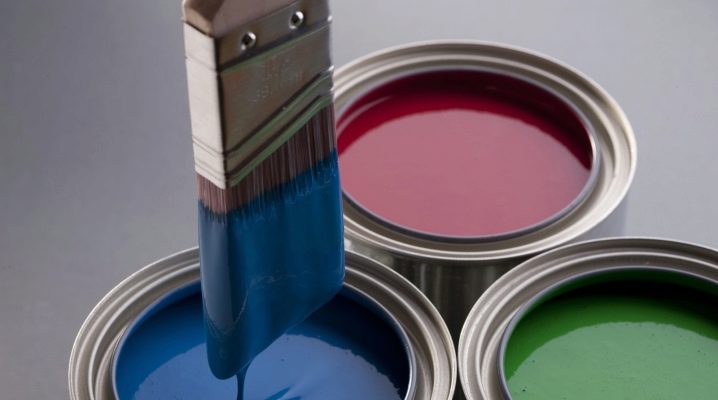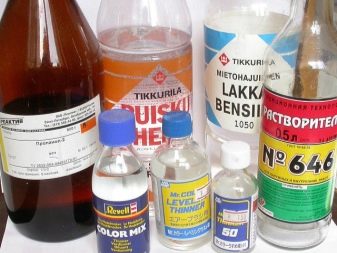How can oil paint be diluted?

Oil paints are sold in various states. Some manufacturers produce ready-to-use products, others in a thicker or more pasty form. To ensure a high-quality application of the dye to the surface, add a thinner before use. Depending on the specific composition and the desired result, various substances are used that give the paints specific properties.


How to dilute?
It is worth immediately determining that the entire list of oil dyes is divided into 2 large subspecies according to the purpose of the appointment:
- household paints - solutions for painting various buildings and objects;
- artistic paints used for painting and refined finishing work.


In order to bring the solution to the desired liquid state, a variety of diluents are used, such as:
- turpentine;
- White Spirit;
- "Solvent 647";
- gasoline and kerosene;
- drying oil and others.

rules
So that after adding a thinner the paint does not deteriorate, the following rules should be observed:
- first you need to assess the condition of the dye solution. After opening the jar, its contents are thoroughly mixed. Due to the fact that drying oil is heavier than coloring pigments, it settles at the bottom.

- It is necessary to determine in what ratio to add thinner. Due to the heterogeneous composition of paints, there is no single standard, however, the volume of the poured substance cannot exceed 5% of the total volume of the paint. When the dye is diluted with white spirit in order to use it as a primer or base coat, this figure rises to 10%. Before pouring in the diluent, you can do a test mixing in a glass, cup, or other container. After determining the proportions, the solvent is poured directly into the paint can. It is better to do this in small portions, while stirring the solution. This will make it more uniform.
- In the process of carrying out work, over time, the paint may thicken again. This is due to the evaporation of the solvent, a small amount of which will "revive" the paint again.

A number of difficulties arise when the paint is in the open air for a long time. To "get it back on line", you need to do the following:
- the film formed on the surface of the paint must be carefully removed. If you mix it in, the liquid will become heterogeneous, with small lumps, which you will not be able to get rid of.
- In a separate container, you need to mix a little kerosene and white spirit, pour the mixture into the paint, stir thoroughly. Just as with the initial stirring, it is better to pour in the mixture in small portions so as not to spoil the paint.
- You can start painting, or wait for the kerosene to evaporate, and then carry out an additional dilution with a small amount of white spirit.


Safety is an important point. On the one hand, both paint and solvents are highly flammable substances. On the other hand, they are also toxic and can cause dizziness, headaches, nausea and other ailments, so work should be done in a well-ventilated area.


For household paints
In the course of repair and finishing works, dyes with a classic composition of drying oil and various pigment substances are used. Such paints require thinning for a number of reasons:
- the paint is too thick. Some are sold in a pasty state;
- a more liquid form is needed for priming or applying a base coat;
- the tree is painted, it is impractical to apply a thick layer on it - the paint will fall off;
- you need to dilute the thickened residues from a previously used can.


Turpentine
This coniferous resin-based substance is widely used as a thinner for oil paints. Turpentine exudes a characteristic odor. It should be used in well ventilated areas. Purified turpentine reduces the drying time of the paint. Depending on the composition, it is divided into several types. For dilution of coloring compositions, the following options are used:
- Woody... It is made from various parts of the tree such as bark or branches. Average quality.
- Furious. The main raw materials are coniferous tree stumps and other residues. The quality of this turpentine is the lowest.
- Turpentine. It is extracted directly from coniferous resins, and by its composition it is almost 100% a mixture of essential oils. Has the best quality. Paints diluted with such turpentine do not lose their qualities



White Spirit
This solvent has the following characteristics:
- there are odorless varieties;
- the evaporation rate is lower than that of other solvents, which allows you to work in a measured rhythm, focusing on the result;
- does not change the color and tone of the dye;
- the standard solution is a weak solvent, but the purified version does the job well;
- affordable price;
- reduces paint consumption.


White spirit is used for various purposes, such as:
- creation of organic dispersion when combined with paints.
- Cleaning of working tools after finishing painting.
- For a degreased surface to be varnished.
- For diluting drying oil, varnish, enamels and other similar substances.
- As a solvent for rubber, alkyds and epoxies.


"Solvent 647"
When using this type of solvent, the following should be considered:
- if the substance is added too much to the paint, its properties will deteriorate. It is imperative to do trial kneading to determine the proportions;
- has an unpleasant odor;
- flammable;
- used as a degreaser for the painted surface;
- used to bring paint to a ground solution;
- enhances paint absorption by the surface;
- requires thorough mixing when combined with paint to obtain a homogeneous mixture.

Gasoline and kerosene
This option is used only in extreme cases in the absence of other types of solvents. These substances are very volatile and actively evaporate at room temperature. Their vapors are highly toxic, quickly causing poisoning, accompanied by nausea, dizziness, headaches and other symptoms. In addition, they are highly flammable and explosive at high concentrations. When diluting outdated thick paint, kerosene remains the best solution. Gasoline also gives the paint a matte finish, which can be used for decorative purposes.


Drying oil
A universal agent for diluting oil paints. Initially, it is included in its composition as a pigment diluent. There are many varieties of drying oil, which should be taken into account when diluting the working solution. The characteristic features of this solvent include the following:
- drying oil promotes the formation of a thin film on the surface of the applied paint;
- with excessive addition of drying oil, the drying time of the applied layer will increase. To avoid such consequences, it is worth pouring in the drying oil in small portions, stirring thoroughly;
- to dilute the dye, exactly the same type of drying oil should be used as in its composition.

To find out what drying oil is needed to dilute the paint, you need to study the label on the can. There are such common types:
- "MA-021". Paint with this marking contains natural drying oil with a vegetable oil content of at least 95%, as well as about 4% driers.
- "GF-023". This subspecies of the solvent contains glyphtal drying oil, which is close to natural in quality.
- "MA-025". Such labeling informs about the content of toxic components, the handling of which requires caution. In addition, such a composition has a specific unpleasant odor that persists for a long time even after the paint dries.
- "PF-024". The dye with such a mark contains pentaphthalic drying oil, glycerin and / or desiccants. The content of natural raw materials is around 50%.


Dilution of drying oil is somewhat different from the dilution of other solvents and consists of the following stages:
- the paint is poured into a convenient container for stirring and removing lumps;
- linseed oil is poured in small quantities and carefully intervenes, the process is repeated until a suitable consistency is obtained;
- the solution is left to "brew" for 7-10 minutes;
- then the resulting mixture is passed through a sieve to remove clots and lumps.


For artistic paints
Artistic dyes used for various kinds of painting, decorative finishing work and other types of creativity also require dilution before use. A characteristic feature is the particular attention to the color and properties of the paint. This circumstance necessitates the use of more delicate solvents. For the dilution of artistic oil-phthalic paints, the following substances are used:
- hemp, sunflower, linseed oil.
- Artistic varnishes are mixtures based on wood resin and solvent. Artistic paints, diluted with such varnishes, are more pliable, fit more tightly, guaranteeing a high-quality overlap. When solidified, the colors become brighter, shine better. This is difficult to achieve with oil and thinner alone. In addition, the strength and stability of the hardened layer is increased.



- "Thinner No. 1" - a composition based on white spirit and turpentine, mainly wood. Good quality at a reasonable price. It will help to breed any formulations.
- "Thinner No. 4" based on pinene - gum turpentine, has excellent qualities, does not affect the tone. The price of such a solvent is also high.
- "Doubles", consisting of gum turpentine and varnish or oil. Pinene liquefies paint, while oil enhances the binding properties of the pigment, and varnish increases the "density" of the paint layer, gives it color saturation, reduces drying time, and makes it more glossy.
- "Tees" include both pinene and oil and varnish.



It is quite possible to dissolve the coloring compositions at home, you just have to use these tips. The dried blot can also be removed using the tools presented above. You can replace any product with an analogue that you can buy without problems.


See below for how to choose an oil paint thinner.













The comment was sent successfully.